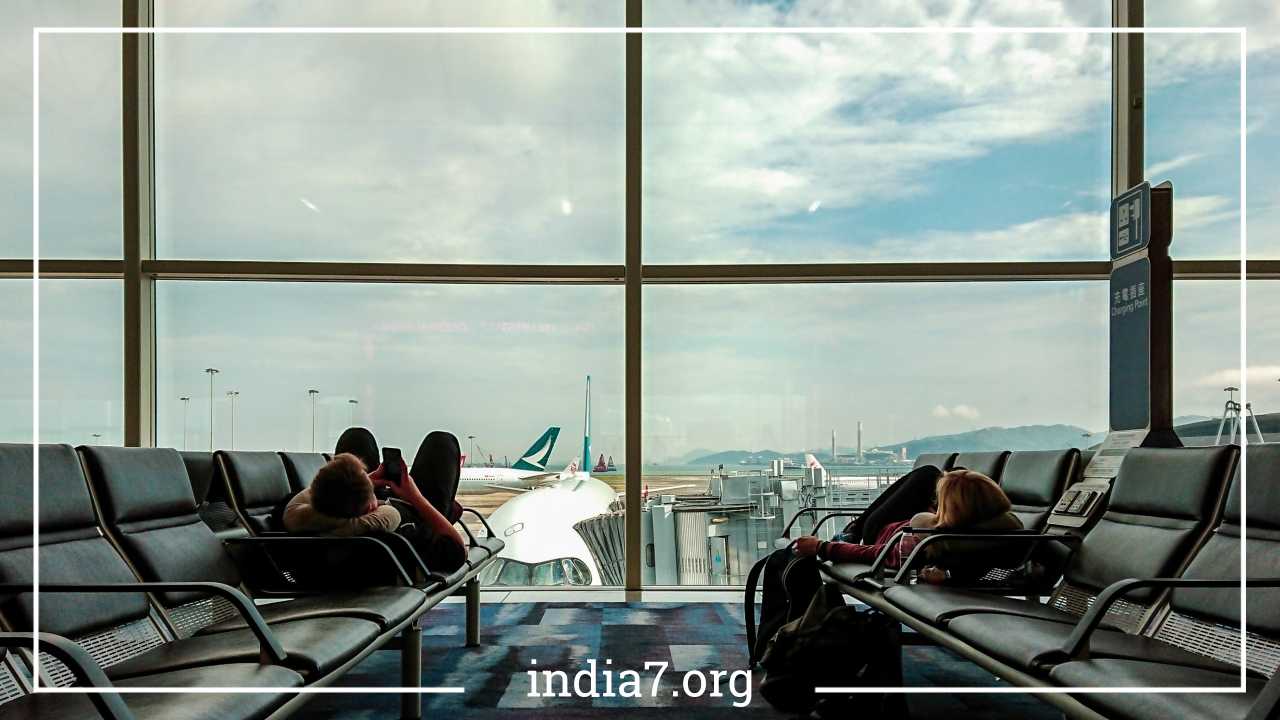Flying Abroad? The Crucial Importance of Knowing Your International Airport

Flying Abroad
Are you planning to travel abroad this year? If so, have you ever taken an international flight before? If not, there’s a good chance you’ve never been to an international airport either. Even if you have visited an international airport before, is it the same one you’ll be departing from on your next trip? If not, it’s strongly recommended that you thoroughly research and familiarize yourself with the international airport you’ll be using. You’ll discover that there are numerous benefits to doing so.
Perhaps the most crucial reason for acquainting yourself with the international airport you’ll be departing from is so you can navigate it with ease. Most international airports serve both international and domestic airlines, making them quite large in size. In fact, some international airports are so vast that they can seem overwhelming. By dedicating time to research and explore each airport’s facilities, particularly the airport terminals, you’ll know where to arrive, where to park, and where to wait.
The Complexity of International Airports
International airports are bustling hubs of travel and commerce, serving as gateways to different parts of the world. These airports play a pivotal role in connecting people, cultures, and businesses across borders. However, the complexity of international airports can be daunting for even the most seasoned travelers. To ensure a smooth and stress-free journey, it’s essential to familiarize yourself with the international airport you’ll be using.
Navigating the Airport
One of the primary reasons for getting to know your international airport is navigation. These airports are often extensive and house numerous terminals, each serving different airlines and destinations. Without prior knowledge, you might find yourself lost or struggling to find your way around, leading to unnecessary stress and potential delays.
By researching the airport layout and terminal locations, you can plan your arrival accordingly. Knowing which terminal to go to can save you valuable time, especially if you’re catching a connecting flight. Additionally, understanding the airport’s layout helps you find amenities like restrooms, baggage claim, and security checkpoints with ease.
Airport Services and Amenities
International airports offer a wide range of services and amenities to cater to the needs of travelers. These services may include lounges, baggage services, currency exchange, rental car facilities, and more. By familiarizing yourself with these offerings in advance, you can take advantage of them to enhance your travel experience.
For instance, if you’re a frequent traveler, you may consider joining an airport lounge program. These lounges provide a comfortable and quiet space to relax, work, or enjoy complimentary refreshments while waiting for your flight. Knowing the location of these lounges and their access requirements can make your airport experience much more enjoyable.
Moreover, some international airports offer concierge services, which can assist you with various tasks such as booking ground transportation, making hotel reservations, or obtaining information about local attractions. Being aware of these services can be incredibly beneficial, particularly if you encounter unexpected situations during your trip.
Parking and Transportation
Parking can be a significant concern when flying from international airports, especially if you’re leaving your vehicle behind for an extended period. Many international airports have large parking facilities, including short-term and long-term options. However, these parking areas might not always be conveniently located near the terminal buildings.
Researching parking options in advance allows you to plan your transportation to the airport effectively. Some airports offer shuttle services from remote parking lots to the terminals, while others may have on-site parking garages within walking distance. Understanding the parking arrangements and costs can help you make informed decisions and avoid surprises on the day of your departure.
Additionally, consider exploring alternative transportation options to and from the airport. Many international airports have well-established public transportation systems, such as trains or buses, connecting them to nearby cities or regions. Utilizing public transport can save you money and reduce the stress associated with driving and parking.
Airport Fees and Charges
Travelers should be aware of potential fees and charges associated with using an international airport’s services. These fees are separate from your airline ticket and can add to the overall cost of your journey.
One common fee is the airport security fee, which is typically included in your ticket price. This fee contributes to the cost of security screening procedures and equipment at the airport. It’s essential to check your ticket or the airline’s website for specific details on these fees, as they can vary by airport and destination.
Another fee to consider is the airport facility fee, which some airports charge passengers to use their facilities and services. This fee may cover maintenance and improvement projects to enhance the passenger experience. It’s a good practice to research and budget for these fees in advance to avoid surprises at the airport.
Furthermore, some international airports charge for services like luggage carts, Wi-Fi access, and even baggage storage. Knowing about these fees in advance can help you plan and allocate your travel budget more effectively.
Shopping and Dining Options
International airports are often home to a diverse array of shops and restaurants, offering passengers the opportunity to shop for souvenirs or enjoy a meal before their flights. However, these services can come at a premium price.
Before your trip, take some time to explore the shopping centers and dining options available at the airport. While it’s difficult to determine the exact cost of your purchases or meals, having an idea of the available choices can help you plan your spending. Additionally, some airports may have duty-free shops, where you can find tax-free goods like cosmetics, electronics, and alcohol, offering potential savings.
Consider your budget and preferences when deciding whether to dine at the airport or wait until you’re onboard the plane. Some travelers prefer to eat at the airport to have a wider selection of options, while others choose to save their appetite for in-flight meals.
Security Procedures and Wait Times
Security procedures are a crucial aspect of international travel, and understanding the processes and wait times at your departure airport is essential for a stress-free journey. Most international airports recommend arriving at least two hours before your scheduled departure time to allow for check-in, security screening, and other pre-flight procedures.
However, some airports, particularly those with high passenger volumes or complex security protocols, may recommend arriving even earlier. Researching the airport’s suggested arrival time can help you plan your schedule accordingly, ensuring you have enough time to complete all necessary pre-flight tasks.
Additionally, understanding the airport’s security procedures and requirements can expedite your journey through the security checkpoint. Be aware of the rules regarding liquids, gels, and electronics in carry-on luggage, as well as the need to remove shoes, belts, and jackets during screening. This knowledge can help you prepare and reduce the risk of delays during the security process.
Flight Delays and Layovers
Despite careful planning, flight delays and layovers are common occurrences in international travel. Familiarizing yourself with your departure airport can be especially advantageous in such situations.
In the event of a delay or layover, you’ll appreciate knowing the airport’s layout, services, and amenities. You can use this knowledge to find a comfortable spot to wait, explore the airport’s entertainment options, or locate a quiet area for relaxation. Some international airports even have designated rest zones with comfortable seating, allowing passengers to rest and recharge during extended waits.
Moreover, being familiar with the airport’s dining options can help you make informed choices when it comes to meals during layovers. Whether you prefer a quick snack or a sit-down meal, knowing the available dining establishments and their locations can save you time and ensure you have a satisfying meal during your wait.
Language and Communication
Traveling to an international destination often involves interacting with people who speak different languages. While most airport staff are proficient in English and other widely spoken languages, having some basic knowledge of the local language can be advantageous.
Before your trip, consider learning a few essential phrases or key terms in the local language of your destination. This can help you navigate interactions with airport staff, ask for directions, or seek assistance more effectively. Additionally, having a translation app or phrasebook on hand can be invaluable in situations where language barriers may arise.
Emergency Information
While no one anticipates emergencies during their travels, it’s essential to be prepared for unexpected situations. Familiarizing yourself with emergency procedures and resources at the airport can provide peace of mind.
Research the location of emergency exits, first aid stations, and AEDs (automated external defibrillators) within the airport terminals. Understanding these locations can be crucial in case of a medical emergency or other urgent situations.
Moreover, keep a copy of your travel insurance policy and emergency contact numbers easily accessible. If you encounter any issues during your journey, having this information readily available can expedite the process of seeking assistance and resolving problems.
Local Laws and Customs
International airports often serve as the first point of entry into a foreign country. Therefore, it’s essential to be aware of the local laws and customs regulations that apply to your destination.
Research any specific customs procedures and requirements for items you plan to bring into the country. This includes information on duty-free allowances, restricted or prohibited items, and declaration forms. Failing to comply with these regulations can result in delays, fines, or confiscation of goods.
Additionally, be aware of any local laws and cultural norms that may apply to your behavior and attire while in the airport and your destination. Understanding and respecting local customs can help you navigate your arrival smoothly and show respect for the local culture.
Final Thoughts
In conclusion, familiarizing yourself with your international airport is a fundamental aspect of ensuring a successful and stress-free travel experience. By investing time in research and preparation, you can navigate the airport with confidence, make informed choices regarding amenities and services, and be better equipped to handle unexpected situations.
From understanding the airport layout and available amenities to budgeting for fees and exploring shopping and dining options, every aspect of airport familiarity contributes to a more enjoyable journey. Furthermore, being prepared for security procedures, flight delays, and potential language barriers enhances your ability to adapt to changing circumstances and make the most of your travel experience.
Remember that knowledge is the key to a smooth and hassle-free airport experience. Whether you’re a first-time international traveler or a seasoned globetrotter, taking the time to acquaint yourself with your departure airport is a wise and practical step in ensuring a memorable and trouble-free journey. With proper preparation, you can navigate the complexities of international travel with ease and confidence, allowing you to focus on the excitement and adventure that await you at your destination.



